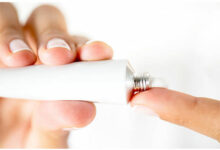- Purpose and promised results
- Mechanism of action
- Contraindications
- Conclusions
There are many home SPA procedures, but salt baths for weight loss stand out. Affordable and budget-friendly: half a kilo-kilo of salt, 10-20 minutes of your time, minus half a kilo of weight. In addition, salt baths strengthen nails and hair and speed up metabolism. Is it really? Let’s figure it out.
Purpose and promised results

So, how to take a salt bath for weight loss :
- Take a shower and use a scrub.
- Dissolve 500 to 1000 g of salt in a full bath. The water must cover the entire body, except for the heart. Water temperature should be 36-39 degrees Celsius. In the bath, you need to lie down for 10 to 20 minutes – on your well-being.
- Diligently rub yourself with a towel without rinsing, wrap yourself in a blanket or plaid and rest like this for at least half an hour.
- Do not eat for 2 hours before and after the procedure. Drink – allowed.
- The course consists of 10-15 procedures.
You can use both sea and rock salt. It is not recommended to use evaporated salt, since it is believed that its structure changes and it does not contain useful components. The recipe may vary. For example:
- Epsom salt baths: 100 g of magnesium sulfate (Epsom salt) is mixed with table or sea salt in a ratio of 1 to 5.
- Salt-soda baths: 500 g of salt + 250-500 g of baking soda (we previously wrote about the effectiveness of soda baths for weight loss).
- Baths with essential oils: a few drops of essential oil are added to the salt before dissolving it in the bath. Grapefruit, orange or cedar oil will do.
What do salt baths promise
What results can be expected from home baths for weight loss:
- 300-500 g of instant weight loss,
- strengthening nails and hair,
- removal of toxins and slags,
- removal of excess cholesterol,
- normalization of hormonal levels due to “useful microelements” that supposedly “penetrate the body through the skin”,
- disappearance of stretch marks and cellulite.
Sounds tempting, but what is true?
Mechanism of action

To understand how salt baths for weight loss work, we will have to briefly turn to chemistry.
Lyric digression
If two solutions of different concentrations are separated by a semipermeable membrane (which passes only solvent molecules), the solvent will move towards the solution in which the concentration of the dissolved substance is higher. This phenomenon is called “osmosis”, and the pressure it creates is osmotic pressure.
It is the osmotic pressure that creates the elasticity of tissues in any living organism and regulates the exchange of water between the cell and the intercellular space. The membrane of any cell is, in fact, a semipermeable membrane: water molecules pass through it by ordinary diffusion, and all other substances – only through special channels with the help of carrier proteins.
A solution whose osmotic pressure is equal to the osmotic pressure of human blood plasma is called isotonic. A solution with a higher osmolarity is called hypertonic, and a solution with a lower osmolarity is called hypotonic. All solutions for intravenous administration (droppers) are isotonic so that blood cells do not die from dehydration or, conversely, from excess water.
Back to slimming baths
Chemically, salt is sodium chloride. And the basis of the solution in the bath will be just that: sodium ions and chlorine ions, regardless of whether it is ordinary salt from the nearest grocery store or something more exotic. Yes, natural sea salt will contain iodine ions (by the way, just like ordinary iodized salt), magnesium, potassium, bromine and other impurities. Some salts, such as Dead Sea salt, will contain more of them. Others, obtained by evaporation, will have a minimum amount of impurities.
If the recommended amount of salt is dissolved in a standard bath filled by half or even a third (so that the water does not reach the heart), the solution in the bath will be hypertonic. It will draw intercellular fluid from the skin, which was carefully treated with a scrub (to open the pores).
The loss of water itself is not dangerous. If the human body was prone to fatal dehydration for such simple reasons, then after the first sea bath, humanity would have ceased to exist. However, a bath with sea salt, like any other bath, will not be particularly useful, at least not as much as they promise.
Will the swelling go away?
Yes, due to the removal of excess water, including sweat, because 38 degrees Celsius is already warmer than comfortable for the body.
Will it get rid of cellulite?
Perhaps. A scrub before a salt bath to remove excess fluid, active massage with a hard towel and 10-15 such procedures will be a good course of anti-cellulite procedures.
Stretch marks?
Unlikely. Quite fresh striae may become less noticeable, but old scars are essentially scars, and they require other methods of struggle.
Will nails get stronger?
Perhaps. Baths with a strong saline solution are a traditional remedy for brittle nails, but no one has collected statistics on this matter. But hair will definitely not get stronger.
Will cholesterol come out?
No, its molecules are too large to penetrate the skin.
As for toxins and slags – everyone talks about them, but no one can say specifically what these terms mean.
There is also no question of any penetration of useful microelements through the pores, since water will move from the body, and not salt into it.
Contraindications

Like any physiotherapy procedure, salt baths for weight loss have contraindications:
- Wounds and abrasions on the skin.
- Chronic heart failure.
- Dry, sensitive skin.
- Lactation (dehydration can reduce the amount of milk).
- Malignant neoplasms.
- Elevated body temperature.
With caution, salt baths should be used during pregnancy: hot water can provoke premature birth. Being in water of a comfortable temperature during pregnancy is generally not contraindicated.
The same applies to people with hypertension or varicose veins: overheating is contraindicated for them, but water procedures are not prohibited in general. When wiping the body after the bath, the area with varicose veins should be bypassed.
Conclusions
So, what is the result? Pleasant sensations after a pleasant water procedure, elimination of puffiness and improved skin condition. Perhaps a decrease in appetite if the procedure is carried out before bedtime (you should not eat for 2 hours before the bath). A slight weight loss due to dehydration, which will disappear as soon as the water-salt balance is restored. That’s all the results.
Baths can be used as an additional tool for relaxation and some skin tightening during weight loss. But to expect something more is useless.
Read also: “Salt Wrap for Weight Loss”.


